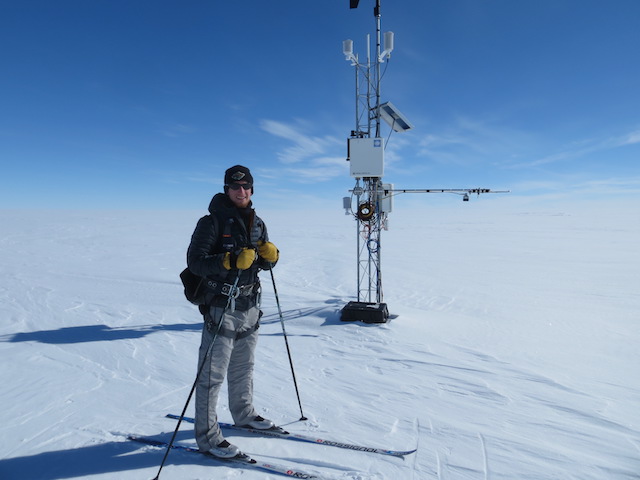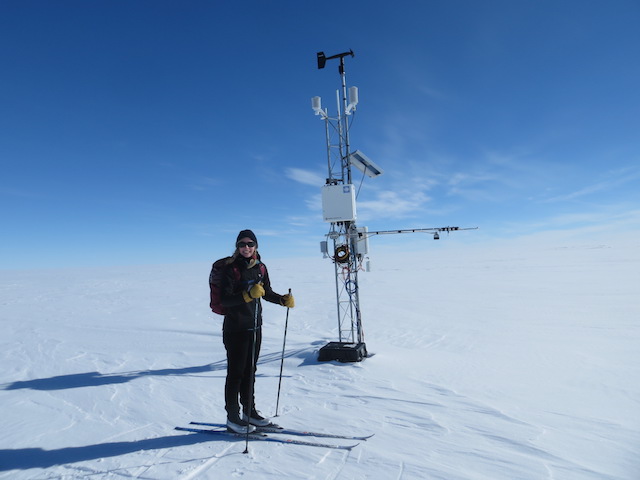Austin is the second-furthest site from WAIS camp, with Thurston Island being the furthest. This is one reason why we had Austin as high on our priority list; it’s also not transmitting, so that’s a big reason, too. On the morning of 2 January, the forecast appeared to be good enough at Austin for us to do our work, so we headed that way. Due to the long flight, we needed to refuel on the way there and back at a fuel cache called Turn 1. It’s in the middle of nowhere, but sort of in the middle of many different sites in West Antarctica which makes it a useful location. It pretty much splits the distance between WAIS and Austin.
Both Otters were flying that day, with ours going to Austin and the other going to a POLENET site. We met up at the fuel cache on our way out!
As we approached Austin, there was a thick, unbroken layer of cloud around 1000 feet above ground. The plane slowly descended below the cloud, and we were greeted to a wide expanse of flat light. It was nearly impossible to discern any surface definition. We ended up circling around Austin for half an hour. The pilots were hoping to find some semblance of surface definition so they could safely land.
Flat light conditions are very disorienting. As we were circling, it looked like we were flying between two very large, gray disks. One disk was the cloud layer above us, the other the ground below. At the horizon all around us was a thin layer of blue, where the cloud ended and we could see the sky.
For the first 15 minutes of our circling, I couldn’t tell whether there was a layer of fog or not at the surface. I also had no idea what our altitude was (turns out we were flying at around 500 feet), so when the plane would bank, it seemed like we were going to crash! Once, when the plane banked, it did it so smoothly that I couldn’t feel it. When I looked out my window and “down” I saw a line of blue. I thought that we were really close to the ground and the blue was a crevasse. I was incredibly confused. Then I realized what I was seeing was the blue sky at the horizon. It’s amazing what scenario your brain conjures up when you can’t get any bearings on what you’re seeing.
Only twice, and very briefly each time, was I able to see some sastrugi on the ground (turns out there wasn’t a layer of fog). The pilots never got a good enough view of the surface, so we had to boomerang back to WAIS. It was a huge bummer because we had made it all the way out to Austin, only to fly back. Alas, so goes Antarctic field work.
The next day, we weren’t on the Otter schedule. Weather was pretty good at WAIS, so we decided to take advantage of it and visit our site right near camp, Kominko-Slade. This site wasn’t on our planned list of visits, and as such it would be a very quick and easy visit to get some pictures and swap the data card. Since we both like to ski, I thought it would be cool to ski to the site. We were able to fit all the equipment we needed in a couple backpacks, and I wore my harness just in case I would need to be on the tower for a while. As far as I know, we are the first team to visit an AWS via skis!
Cheers! -Dave







